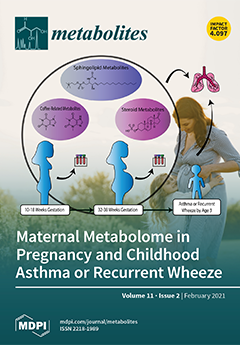Open AccessArticle
Chemical Elicitors Induce Rare Bioactive Secondary Metabolites in Deep-Sea Bacteria under Laboratory Conditions
by
Rafael de Felício, Patricia Ballone, Cristina Freitas Bazzano, Luiz F. G. Alves, Renata Sigrist, Gina Polo Infante, Henrique Niero, Fernanda Rodrigues-Costa, Arthur Zanetti Nunes Fernandes, Luciane A. C. Tonon, Luciana S. Paradela, Renna Karoline Eloi Costa, Sandra Martha Gomes Dias, Andréa Dessen, Guilherme P. Telles, Marcus Adonai Castro da Silva, Andre Oliveira de Souza Lima and Daniela Barretto Barbosa Trivella
Cited by 7 | Viewed by 3532
Abstract
Bacterial genome sequencing has revealed a vast number of novel biosynthetic gene clusters (BGC) with potential to produce bioactive natural products. However, the biosynthesis of secondary metabolites by bacteria is often silenced under laboratory conditions, limiting the controlled expression of natural products. Here
[...] Read more.
Bacterial genome sequencing has revealed a vast number of novel biosynthetic gene clusters (BGC) with potential to produce bioactive natural products. However, the biosynthesis of secondary metabolites by bacteria is often silenced under laboratory conditions, limiting the controlled expression of natural products. Here we describe an integrated methodology for the construction and screening of an elicited and pre-fractionated library of marine bacteria. In this pilot study, chemical elicitors were evaluated to mimic the natural environment and to induce the expression of cryptic BGCs in deep-sea bacteria. By integrating high-resolution untargeted metabolomics with cheminformatics analyses, it was possible to visualize, mine, identify and map the chemical and biological space of the elicited bacterial metabolites. The results show that elicited bacterial metabolites correspond to ~45% of the compounds produced under laboratory conditions. In addition, the elicited chemical space is novel (~70% of the elicited compounds) or concentrated in the chemical space of drugs. Fractionation of the crude extracts further evidenced minor compounds (~90% of the collection) and the detection of biological activity. This pilot work pinpoints strategies for constructing and evaluating chemically diverse bacterial natural product libraries towards the identification of novel bacterial metabolites in natural product-based drug discovery pipelines.
Full article
►▼
Show Figures






